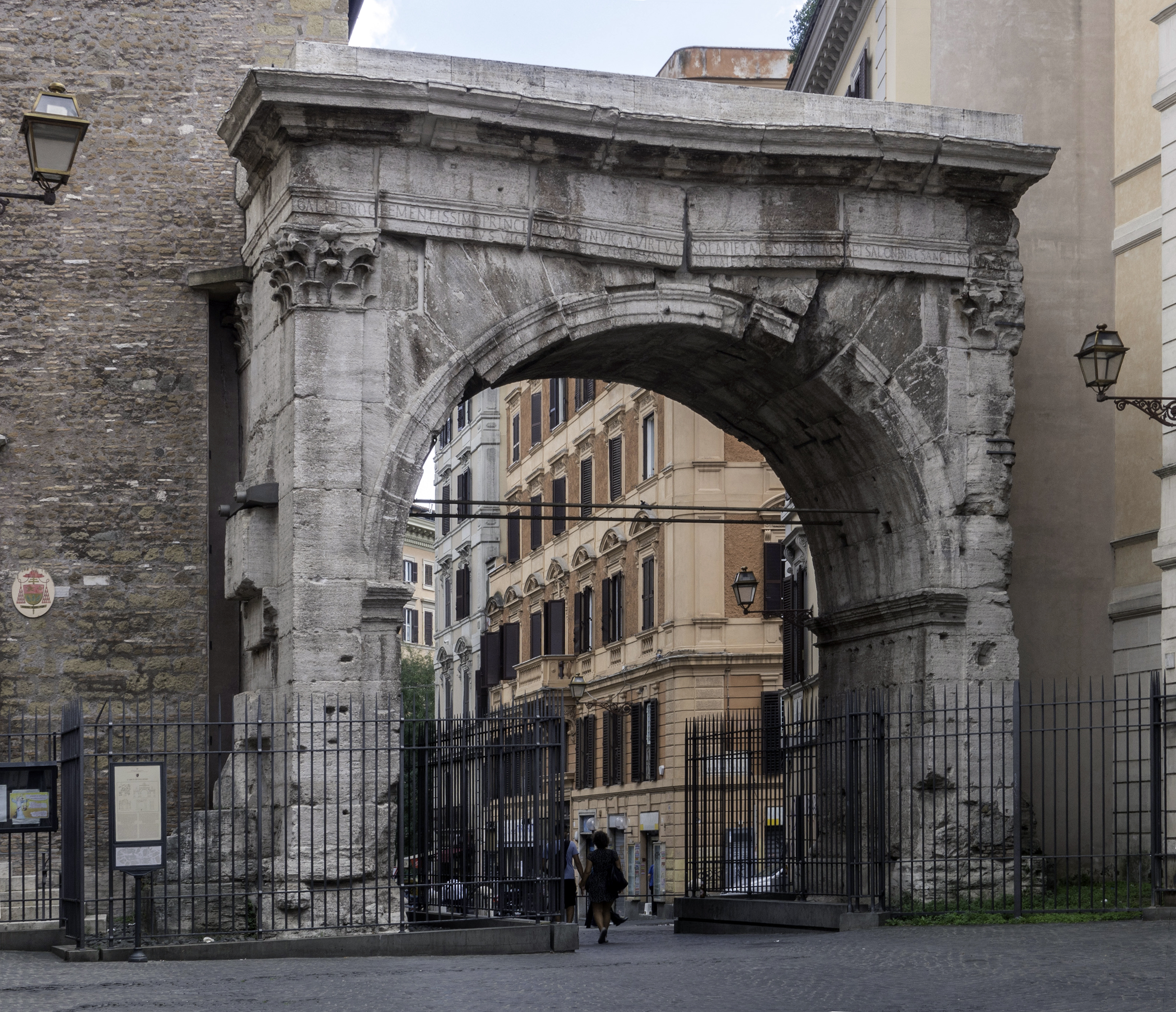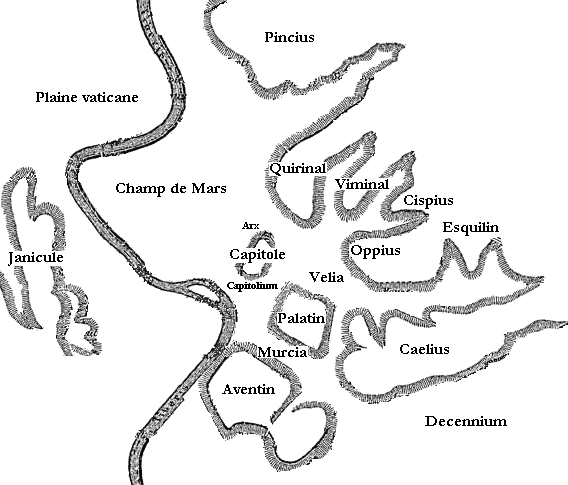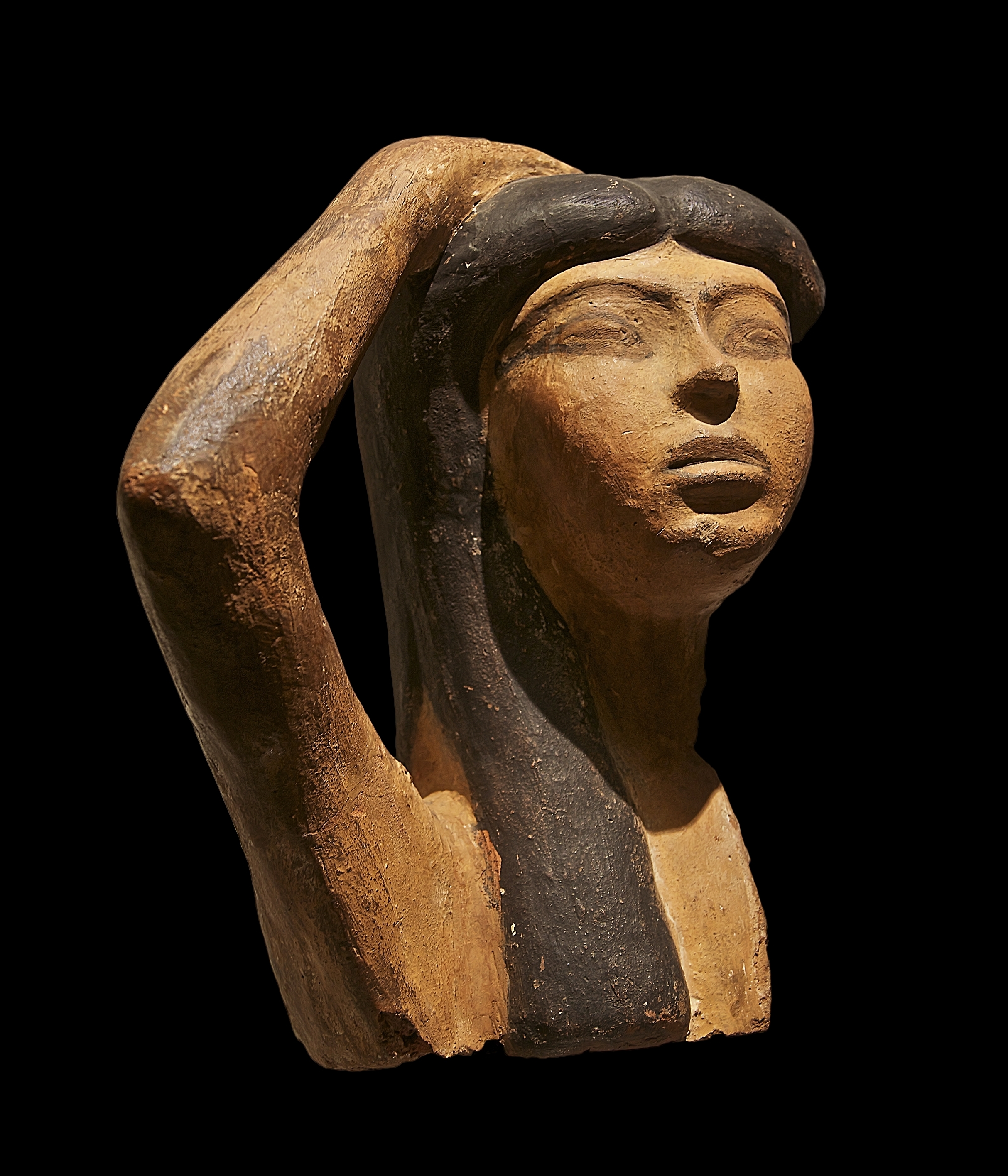|
14 Regions Of Augustan Rome
In 7 BC, Augustus divided the city of ancient Rome, Rome into 14 administrative regions (Latin , ). These replaced the four —or "quarters"—traditionally attributed to Servius Tullius, sixth king of Rome. They were further divided into official neighborhoods (). Originally designated by number, the regions acquired nicknames from major landmarks or Topography of ancient Rome, topographical features within them. After the reign of Constantine the Great, the imperial city of Constantinople was also divided into fourteen ''regiones'', on the Roman example: the 14 regions of Constantinople. History of Rome's regions Evidence of regions in Rome before Augustus is limited. Writing in the mid-40s BC, Marcus Terentius Varro describes four 'partes urbis', referring to them individually as a ‘regio’ with both names and numbers: I Suburana, II Esquilina, III Collina and IV Palatina. Varro also provides evidence for vici in Republican Rome, deriving the word vicus from via and w ... [...More Info...] [...Related Items...] OR: [Wikipedia] [Google] [Baidu] |
Plan Rome
A plan is typically any diagram or list of steps with details of timing and resources, used to achieve an objective to do something. It is commonly understood as a temporal set of intended actions through which one expects to achieve a goal. For spatial or planar topologic or topographic sets see map. Plans can be formal or informal: * Structured and formal plans, used by multiple people, are more likely to occur in projects, diplomacy, careers, economic development, military campaigns, combat, sports, games, or in the conduct of other business. In most cases, the absence of a well-laid plan can have adverse effects: for example, a non-robust project plan can cost the organization time and money. * Informal or ad hoc plans are created by individuals in all of their pursuits. The most popular ways to describe plans are by their breadth, time frame, and specificity; however, these planning classifications are not independent of one another. For instance, there is a close ... [...More Info...] [...Related Items...] OR: [Wikipedia] [Google] [Baidu] |
Servian Wall
The Servian Wall (; ) is an ancient Roman defensive barrier constructed around the city of Rome in the early 4th century BC. The wall was built of volcanic tuff and was up to in height in places, wide at its base, long, and is believed to have had 16 main gates, of which only one or two have survived, and enclosed a total area of . In the 3rd century AD it was superseded by the construction of the larger Aurelian Walls as the city of Rome grew beyond the boundary of the Servian Wall. History The wall is named after the sixth Roman King, Servius Tullius. The literary tradition stating that there was some type of defensive wall or earthen works that encircled the city of Rome dating to the 6th century BC has been found to be false. The main extent of the Servian Wall was built in the early 4th century BC, during what is known as the Roman Republic. Construction The Servian Wall was originally built from large blocks of Cappellaccio tuff (a volcanic rock made from ash and rock ... [...More Info...] [...Related Items...] OR: [Wikipedia] [Google] [Baidu] |
Viminal Hill
The Viminal Hill ( ; ; ) is the smallest of the famous Seven Hills of Rome. A finger-shape cusp pointing toward central Rome between the Quirinal Hill to the northwest and the Esquiline Hill to the southeast, it is home to the Teatro dell'Opera and the Termini Railway Station. At the top of the Viminal Hill is the Palace of Viminale that hosts the headquarters of the Ministry of the Interior; currently the term ''Il Viminale'' means the Ministry of the Interior. According to Livy, the hill first became part of the city of Rome, along with the Quirinal Hill, during the reign of Servius Tullius, Rome's sixth king, in the 6th century BC. The name of the hill derives from Latin ''viminalis'' (“pertaining to osiers”), from '' vimen'' (“a pliant twig A twig is a thin, often short, branch of a tree or Bush (plant), bush. The buds on the twig are an important diagnostic characteristic, as are the abscission scars where the leaves have fallen away. The color, textur ... [...More Info...] [...Related Items...] OR: [Wikipedia] [Google] [Baidu] |
Vespasian
Vespasian (; ; 17 November AD 9 – 23 June 79) was Roman emperor from 69 to 79. The last emperor to reign in the Year of the Four Emperors, he founded the Flavian dynasty, which ruled the Empire for 27 years. His fiscal reforms and consolidation of the empire brought political stability and a vast building program. Vespasian was the first emperor from an Equestrian (Roman), equestrian family who rose only later in his lifetime into the Roman Senate, senatorial rank as the first of his family to do so. He rose to prominence through military achievement: he served as legatus, legate of Legio II Augusta during the Roman invasion of Britain in 43, and later led the suppression of the First Jewish–Roman War, Jewish rebellion of 66–70. While he was engaged in the campaign in Judaea (Roman province), Judaea, Emperor Nero died by suicide in June 68, plunging Rome into a year of civil war known as the Year of the Four Emperors. After Galba and Otho perished in quick succession, V ... [...More Info...] [...Related Items...] OR: [Wikipedia] [Google] [Baidu] |
Temple Of Peace, Rome
The Temple of Peace (), also known as the ''Forum of Vespasian'' (), was built in Rome in 71 AD under Emperor Vespasian in honour to Pax, the Roman goddess of peace. Positioned southeast of the Roman Forum, between the Via Sacra and the Carinae, the temple stood on the southeast side of the Argiletum, offering a view of the Velian Hill and overlooking the renowned Colosseum. It housed artifacts such as the Table of Shewbread and the seven-branched menorah from the Jerusalem Temple, which were taken as spoils during the siege of Jerusalem in 70 CE. History Statius claims that Emperor Domitian was largely responsible for the completion of the temple, not Vespasian - this issue remains controversial within the archaeological world today. The Temple of Peace is part of the Imperial Fora which is "a series of monumental ''fora'' (public squares), constructed in Rome over a period of one and a half centuries." It is not officially considered a forum because there is no evidenc ... [...More Info...] [...Related Items...] OR: [Wikipedia] [Google] [Baidu] |
Regio IV Templum Pacis
The Regio IV Templum Pacis is the fourth 14 regions of Augustan Rome, regio of imperial Rome, under Augustus's administrative reform. Regio IV took its name from the Temple of Peace, Rome, Temple of Peace built in the region by the emperor Vespasian. It includes the valley between the Esquiline and the Viminal Hill, Viminal hills, the popular area of the Suburra, and the Velian Hill. Geographic extent and important features Although centred on the Temple of Peace, Rome, Temple of Peace within the Imperial Fora, Regio IV was cut in two by the Clivus Suburanus. To the north west, it was bordered by the Vicus Patricius, the Clivus Suburanus and the Servian Wall and included the Carinae. To the south east, it was bordered by the Colosseum and the Roman Forum, and included the Imperial fora and the Suburra. A measurement taken at the end of the 4th century recorded that the perimeter of the region was 13,000 Roman feet (approximately 3.84 km). When first organised by Augustus, R ... [...More Info...] [...Related Items...] OR: [Wikipedia] [Google] [Baidu] |
Esquiline Hill
The Esquiline Hill (; ; ) is one of the Seven Hills of Rome. Its southernmost cusp is the ''Oppius'' ( Oppian Hill). Etymology The origin of the name ''Esquiline'' is still under much debate. One view is that the hill was named after the abundance of ( Italian oaks) growing there. Another view is that, during Rome's infancy, the Capitolium, the Palatinum, and the northern fringes of the Caelian were the most-populated areas of the city, whose inhabitants were considered ("in-towners"); those who inhabited the external regions – Aurelian, Oppius, Cispius, Fagutal – were considered ("suburbanites"). History The Esquiline Hill includes three prominent spurs, which are sometimes called "hills" as well: *Cispian (''Cispius'') – northern spur * Oppian (''Oppius'') – southern spur *Fagutal (''Fagutalis'') – western spur Rising above the valley in which was later built the Colosseum, the Esquiline was a fashionable residential district. According to Livy, th ... [...More Info...] [...Related Items...] OR: [Wikipedia] [Google] [Baidu] |
Oppian Hill
The Oppian Hill (Latin, ''Oppius Mons''; ) is the southern spur of the Esquiline Hill, one of the Seven hills of Rome, Italy. It is separated from the Cispius on the north by the valley of the Suburra, and from the Caelian Hill on the south by the valley of the Colosseum. The Oppius and the Cispius together form the Esquiline plateau just inside the line of the Servian Wall. In the divisions of the Septimontium (seven hills) Fagutal appears as an independent locality, which implies that originally "Oppius" was strictly applied to this spur except the western end. The northern tip of this western end was also called Carinae, which extended between the Velian Hill and the Clivus Pullius, looked out to the southwest (across the swamps of the Palus Ceroliae towards the Aventine), incorporated the Fagutal and was one of ancient Rome's most exclusive neighborhoods. At least for religious purposes the name Oppius continued in use to the end of the Roman Republic; no later i ... [...More Info...] [...Related Items...] OR: [Wikipedia] [Google] [Baidu] |
Colosseum
The Colosseum ( ; , ultimately from Ancient Greek word "kolossos" meaning a large statue or giant) is an Ellipse, elliptical amphitheatre in the centre of the city of Rome, Italy, just east of the Roman Forum. It is the largest ancient amphitheatre ever built, and is still the largest standing amphitheatre in the world, despite its age. Construction began under the Emperor Vespasian () in 72 and was completed in AD 80 under his successor and heir, Titus (). Further modifications were made during the reign of Domitian (). The three emperors who were patrons of the work are known as the Flavian dynasty, and the amphitheatre was named the Flavian Amphitheatre (; ) by later classicists and archaeologists for its association with their family name (Flavia (gens), Flavius). The Colosseum is built of travertine#Uses, travertine limestone, tuff (volcanic rock), and brick-faced Roman concrete, concrete. It could hold an estimated 50,000 to 80,000 spectators at various points in its h ... [...More Info...] [...Related Items...] OR: [Wikipedia] [Google] [Baidu] |
Isis
Isis was a major goddess in ancient Egyptian religion whose worship spread throughout the Greco-Roman world. Isis was first mentioned in the Old Kingdom () as one of the main characters of the Osiris myth, in which she resurrects her slain brother and husband, the divine king Osiris, and produces and protects his heir, Horus. She was believed to help the dead enter the afterlife as she had helped Osiris, and she was considered the divine mother of the pharaoh, who was likened to Horus. Her maternal aid was invoked in healing spells to benefit ordinary people. Originally, she played a limited role in royal rituals and temple rites, although she was more prominent in funerary practices and magical texts. She was usually portrayed in art as a human woman wearing a throne-like hieroglyph on her head. During the New Kingdom (), as she took on traits that originally belonged to Hathor, the preeminent goddess of earlier times, Isis was portrayed wearing Hathor's headdress: a ... [...More Info...] [...Related Items...] OR: [Wikipedia] [Google] [Baidu] |
Regio III Isis Et Serapis
The Regio III Isis et Serapis was the third regio of imperial Rome, under Augustus's administrative reform. Regio III took its name from the double sanctuary of Isis and Serapis, in the area of the Via Praenestina, containing the valley that was to be the future site of the Colosseum, and parts of the Oppian and Esquiline hills. Geographic extent and important features Centred on the Oppian Hill, Regio III was bordered to its south east by the Via Tusculana, to the north by the Clivus Suburanus, and to the west by the Via Labicana. A measurement taken at the end of the 4th century recorded that the perimeter of the region was 12,350 Roman feet (approximately 3.65 km). Perhaps the most noticeable structure that resided within Regio III sat in the valley between the Caelian and Oppian Hills. This was the Flavian Amphitheatre, today referred to as the Colosseum. The most important ancient festival held there was the Secular games hosted by the Roman emperor Philip in 248 C ... [...More Info...] [...Related Items...] OR: [Wikipedia] [Google] [Baidu] |
Regio II Caelimontium
The Regio II Caelimontium is the second 14 regions of Augustan Rome, regio of imperial Rome, under Augustus's administrative reform. It took its name from the Caelian Hill, which the region was centred on. History According to Livy, during the reign of Tullus Hostilius, the entire population of Alba Longa was forcibly resettled on the Caelian Hill. In Roman Republic, Republican-era Rome the Caelian Hill was a fashionable residential district, site of residences of the wealthy. Archaeological work under the Baths of Caracalla has uncovered the remains of lavish villas complete with murals and mosaics. A significant area of the hill is taken up by the villa and gardens of Villa Celimontana. The Caelian Hill is the site of the Santi Giovanni e Paolo, Rome, Basilica of Santi Giovanni e Paolo and the ancient basilica of Santo Stefano Rotondo. Subdivisions At the turn of the 5th century, the regio was divided into seven ''vicus, vici'' (districts) and 3,600 ''Insula (Roman city), insula ... [...More Info...] [...Related Items...] OR: [Wikipedia] [Google] [Baidu] |




